Mokume Gane, Japanese Unique Wedding bands and Engagement rings


- 949-629-8174(USA) 81-90-9625-2928(Others)
- english@mokumeganeya.com
Find “Mokume Gane” Chapter 6 : Reproduction work of a famous Mokume Gane sword tsuba
At Mokumeganeya, each year, we work on the reproduction of a famous sword tsuba. The work that was presented in April 2017 at the Society for the Preservation of Japanese Art Swords’ Shinsakuto (newly made swords) exhibition, is a reproduction of a Meiji era work “Mokume Gane tsuba, signed Toshinobu, residing in Matsuyama.” Following the win in the “Effort Prize” category for the 2015 reproduction of the tsuba from the Baur Foundation Museum of Far Eastern Art in Switzerland, this reproduction was also awarded the same prize.
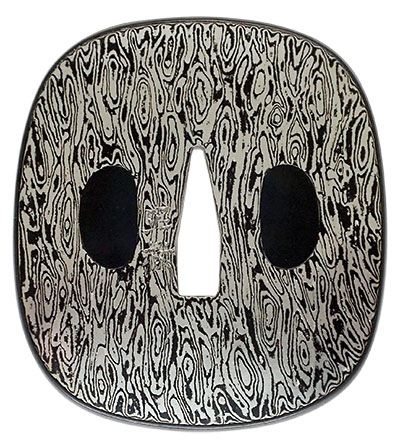 Front
Front
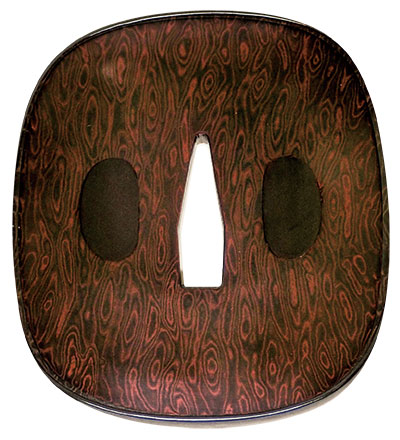 Back
Back
Reproduction by TAKAHASHI Masaki of Mokume Gane tsuba, signed Toshinobu, residing in Matsuyama
The tsuba which was reproduced on this occasion is the property of the NPO, Japan Mokumegane Research Institute. It is a piece made by YAMAMOTO Toshinobu in Matsuyama, Iyo Province (the current Ehime Prefecture), during the Meiji era. It is an extremely important piece as it is a two-sided Mokume Gane tsuba that is part of the koshirae for a long and short sword. The front and back of the tsuba represent “night” and “day.” They seem to be somewhere between the realistic and impressionistic, and offer an artistic representation of “night and day.”

“Mokume Gane tsuba, signed Toshinobu, residing in Matsuyama”
Collection of the Japan Mokumegane Research Institute
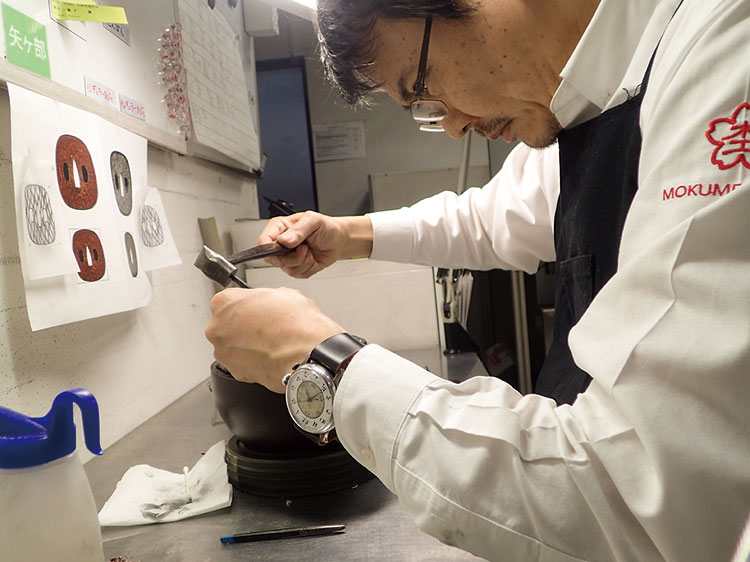
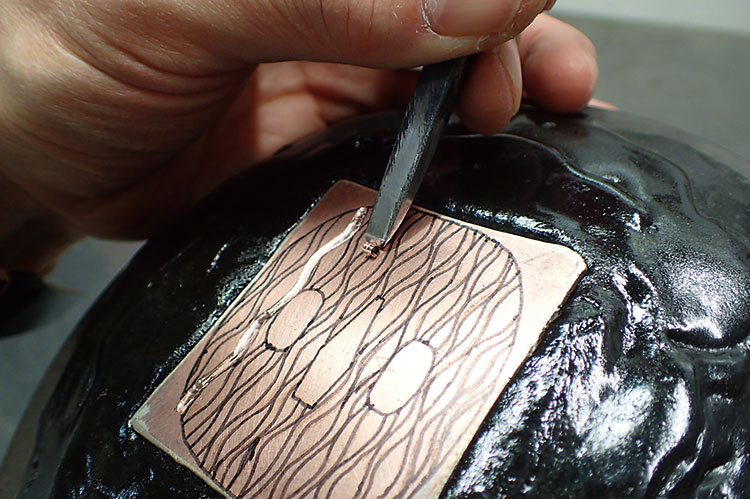
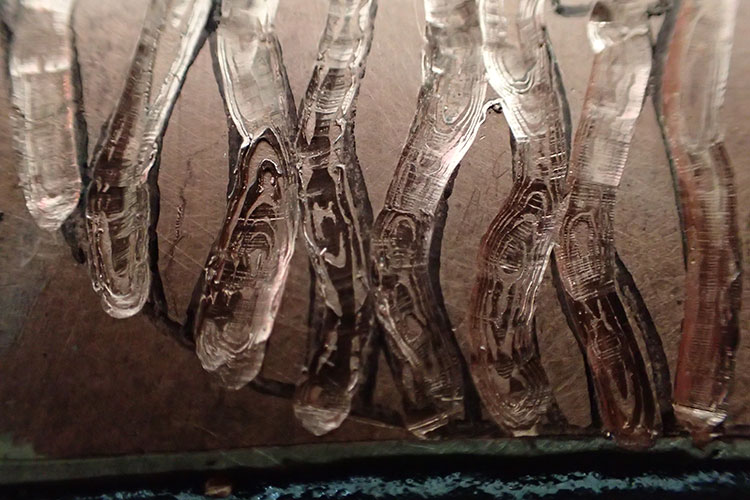
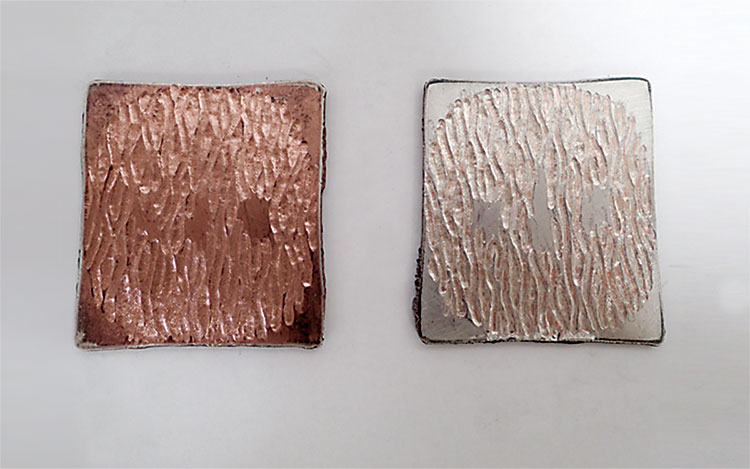
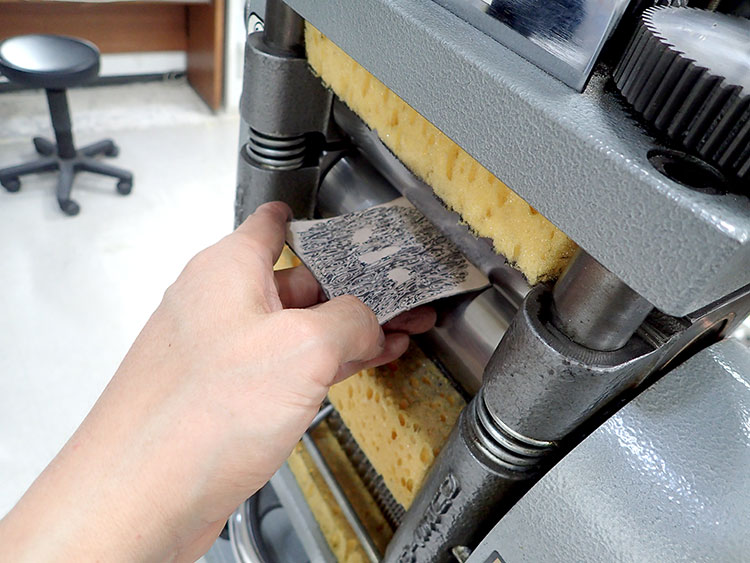
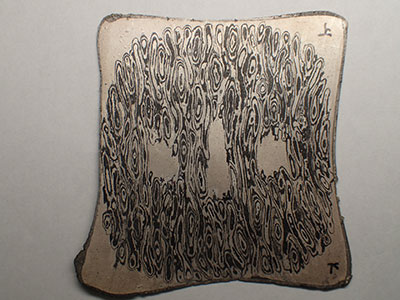
The materials used on the “night” surface are shakudo and silver. Shakudo is an alloy made of copper and gold and, at first sight, appears no different in color from pure copper, but the chemical boiling bath patination process turns it a bluish black. The back “day” side is made of shakudo and pure copper. The patination of the pure copper turns it a reddish brown.
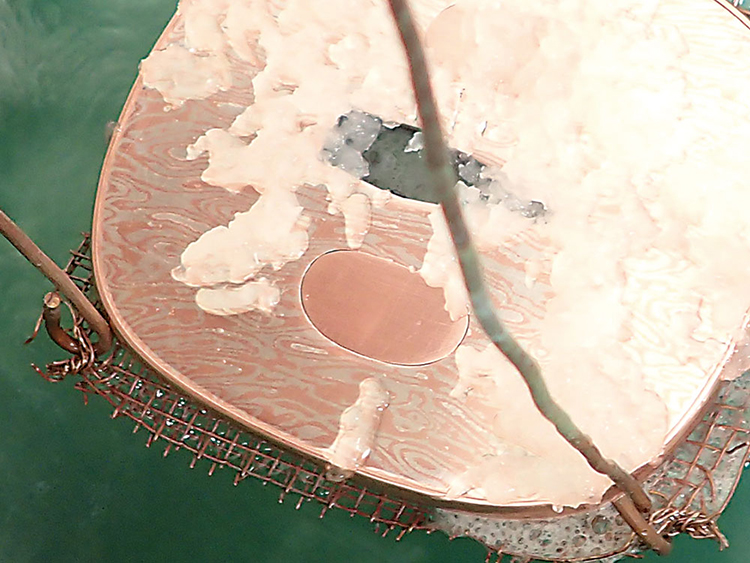
Front – Before Patination
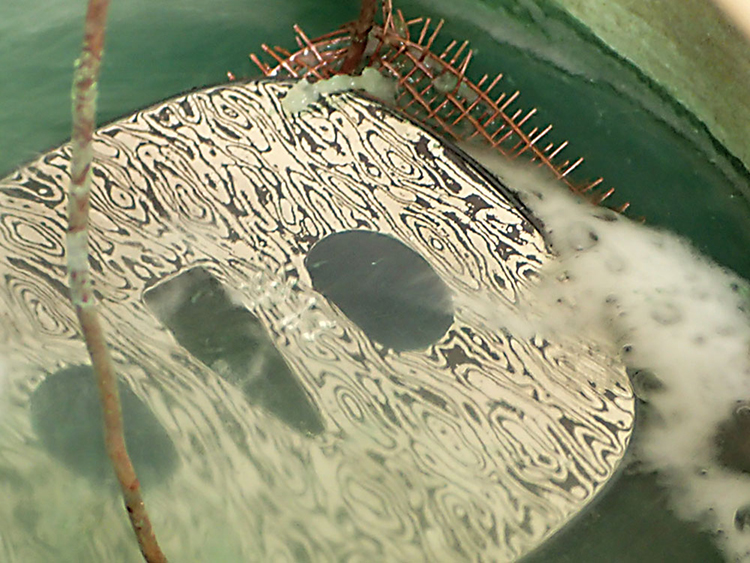
Front – After Patination
The chemical boiling bath patination consists of boiling for a period lasting from several dozen minutes to several hours in a mixture with cupric sulfate and rokusho, leading to oxidation of the surface and an associated change in color. Deliberate oxidation of metals to achieve desired colors is an age-old patination process, and pieces such as the Meiji era “Night and Day” have survived over a hundred years with their beautiful color unchanged.
Mokume Gane Wedding Rings: Reddot & iF Design Award READ MORE >>
Mokume Gane Engagement Rings READ MORE >>
Mokume Gane Wedding Bands READ MORE >>


